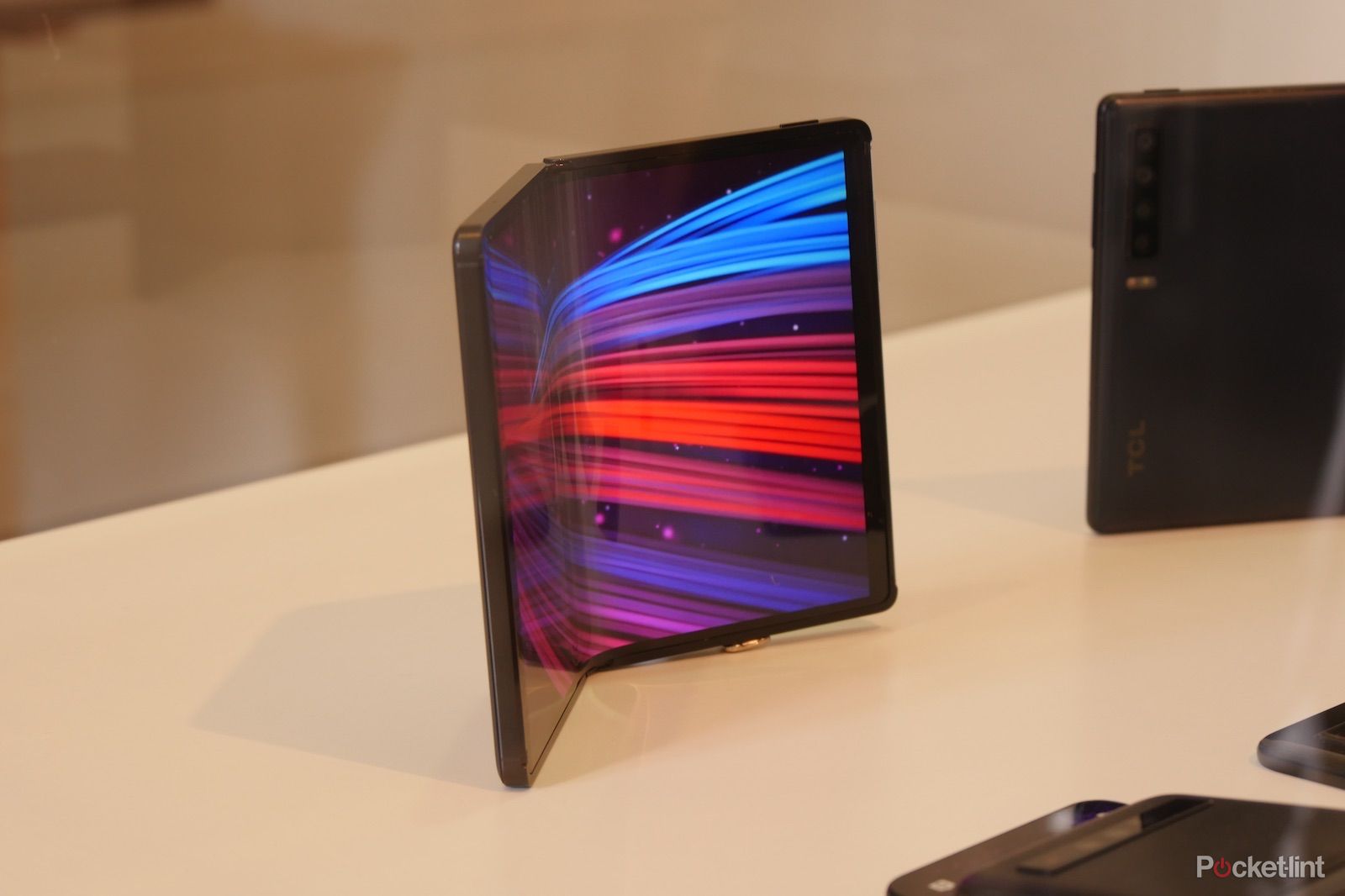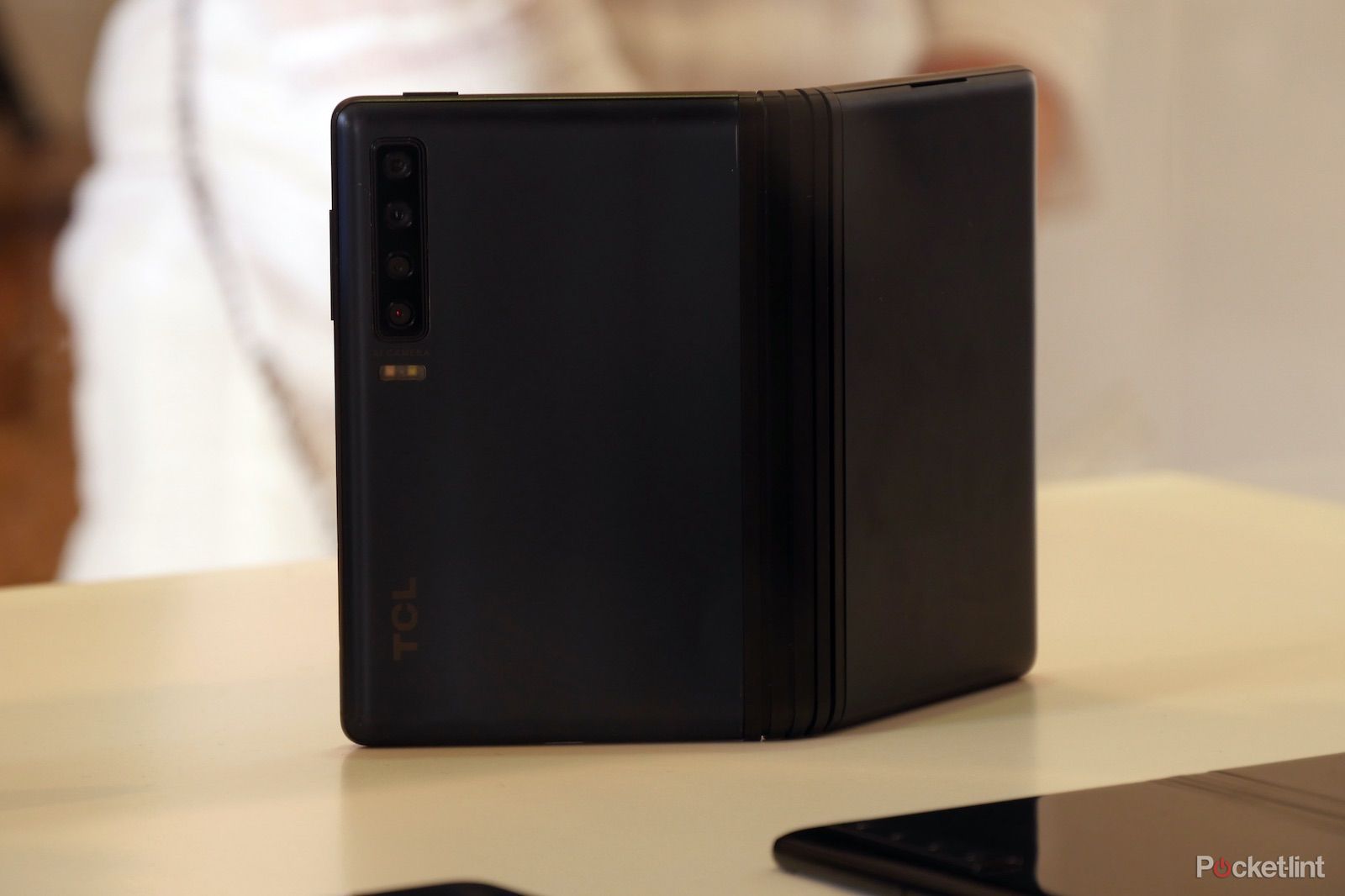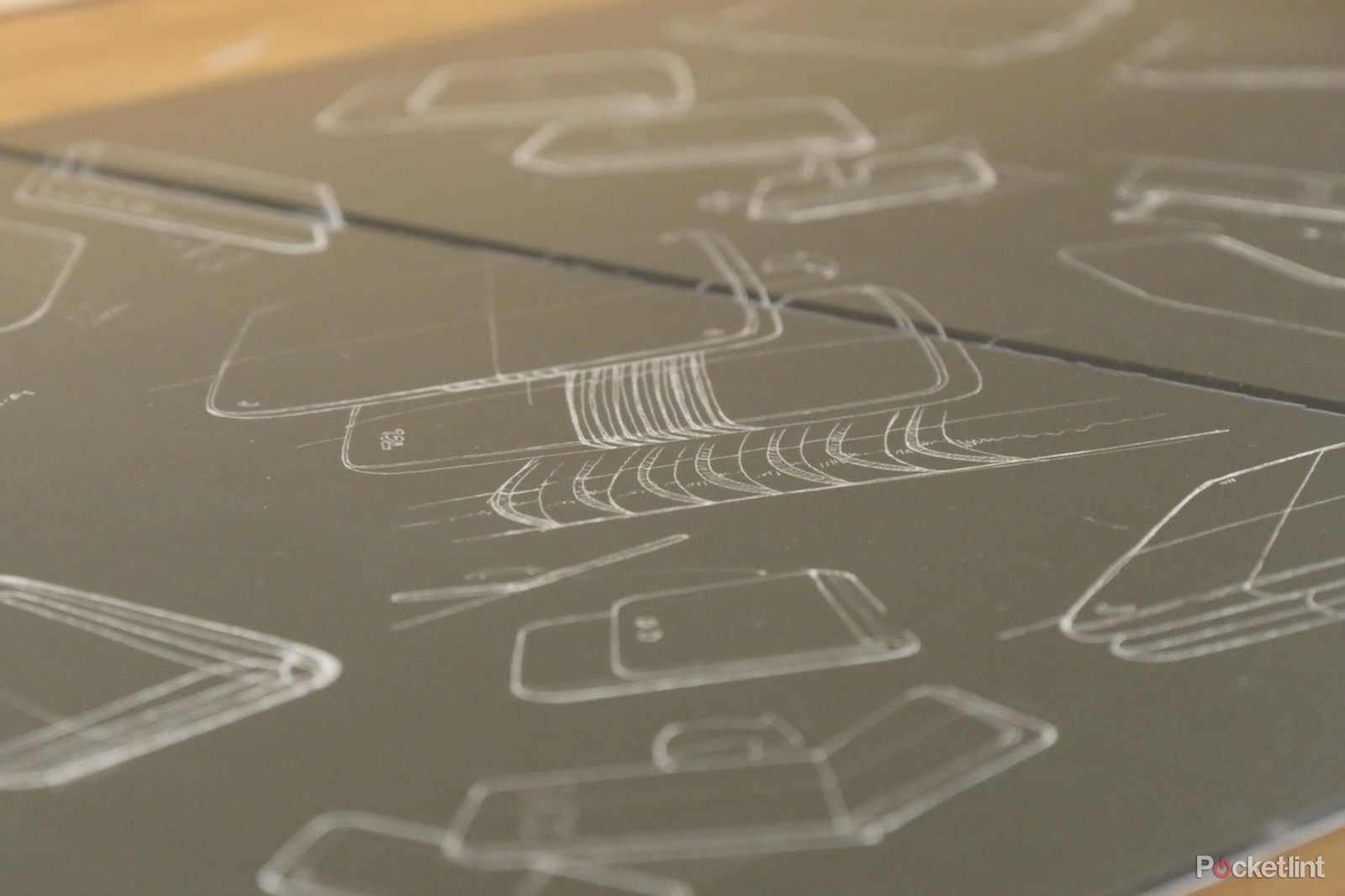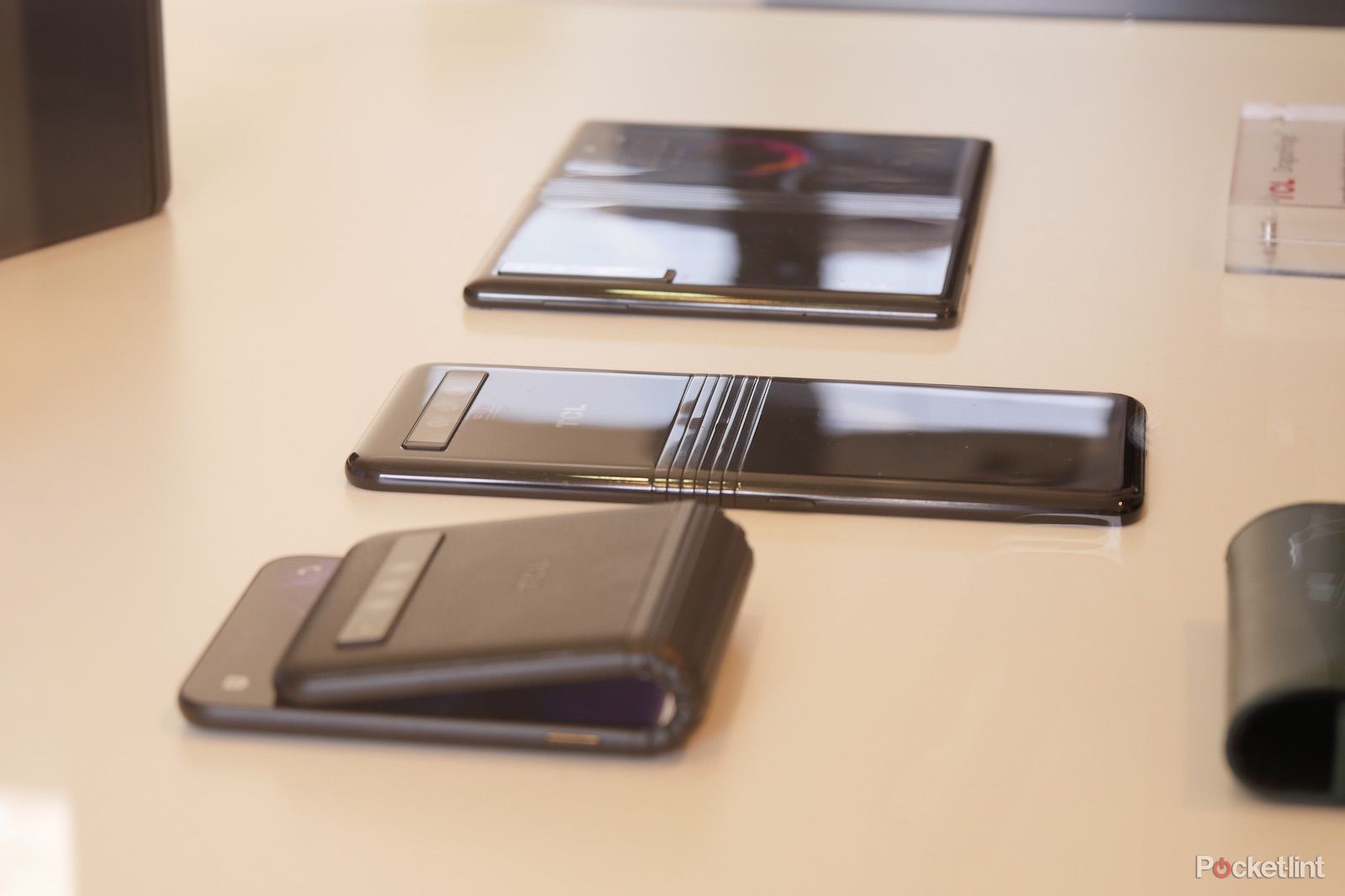TCL has announced that it is entering the foldable device game, but rather than show off a specific handset, it wanted to give us a sneak peak at a hinge technology that could enable not just various designs of foldable smartphone, but perhaps even wearables too.
Saying there was no handset at all at its Mobile World Congress briefing would be misleading though. Perhaps the most promising of the folding devices was a prototype smartphone that opened and shut like a wallet. Folded shut, it wasn't far off being the same size as one either.
Opened up, the screen is on the inside, which in some ways makes more sense than having it exposed on the outside constantly like the Huawei Mate X does. Most obviously, it means there's no external display element stretched over the hinge/spine, meaning no excessive scratching or wear.
For those worrying at this point that it might not be usable when shut, TCL did also show a concept with a display on the cover, which would potentially allow you to check notifications, read messages etc. without having to open the device. Similar in theory to the Galaxy Fold then, but not at all similar in execution.
It snaps shut using magnets and features a camera system on the rear, but being simply a proof of concept, there's no specifications to share or anticipated pricing.
What makes this devices possible - DragonHinge - is a technology patented by TCL. The company's vast R&D department, as well as researching and developing displays for TVs, tablets and phones, has been working on a hinge technology.
While the wallet-style phone was the most compelling, and one that drew our attention, it could also be used in a wearable device that wraps a flexible display around your wrist. Like wise, it could conceivably be used for all manner of technological devices from tablets, wearables and phones through audio.
What's interesting to us - perhaps almost as much as the hinge itself - is the possibility that TCL is going to launch its own-brand products to the mobile market.
Nothing is confirmed yet, but, it would make a great deal of sense to enter a new market without hiding beneath the popular Alcatel and BlackBerry brands (which it also designs/manufactures). Logically, neither of those would be a good fit for a high-end, futuristic device anyway.
Alcatel has been doing well in the low/affordable market and isn't particularly known for launching expensive devices with brand new technology. Similarly, BlackBerry's brand promises a different experience all together.
For BlackBerry fans, there's still the possibility that this could make its way to a device in the future, but the way the technology is presented, makes it feel very much like TCL wants us to know that this is a TCL technology.
What's more, with this being such an interesting mechanism with some potential, it's the perfect way to bring TCL's name - which is doing very well in the US TV market - into another category with devices that will surely get people talking.
Another concept shown off was the candy-bar style phone int he image above, which is a long, slender device when being used but folds up to a neat little package. We're not as keen on this one, but it's interesting to see the different design ideas coming through. It almost feels like the golden age of wacky phone designs could be returning.
The foldable devices from TCL likely won't be ready for consumers until the middle of 2020, but you can expect them to be fairly expensive (compared to both Alcatel and BlackBerry Mobile phones), and be quite different to the Huawei Mate X and Samsung Galaxy Fold.




